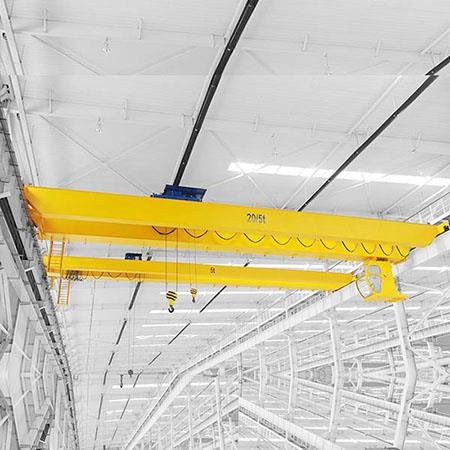Once you decide your company needs new overhead cranes or other lifting devices for an existing facility, your next step is determining the required performance and design specifications.
These include lifting capacity, area of hook coverage, travel pattern, span, lift height and required duty cycle of the overhead cranes – that is, how many lifts per hour, the average load per lift and the percentage of loads that approach the maximum capacity.
You’ll also need to consider the design of your building and the load it is made to support. For this, you’ll need building plans and the help of a structural engineer.
Your building will play a major role in your choice of standard or custom cranes. Hanging a crane from the ceiling will keep floor space as open and uncluttered as possible. But if the ceiling can’t bear the added load, you’ll have to consider a freestanding crane.
And with the freestanding option you’ll have other considerations to address, such as the floor’s capacity to support additional applied loads. Plus, you’ll want to design and install the crane so it’s as unobtrusive as possible, which will help to enhance productivity and safety.
No matter the type of crane, you must also consider the “envelope” involved. That is, the complete three-dimensional area that the crane takes up in your building. This includes the hook-coverage area and space occupied by the crane’s structure. Other dimensions to consider include runway rail-to-floor, runway rail-to-lowest overhead obstruction, and rail-to-closest wall obstruction. You’ll also need to allow additional space to prevent the crane’s operation from interfering with neighboring production activity.

Keeping all this information in mind, a crane consultant can help you identify the equipment that best matches your lifting needs and building specifications. The consultant will be able to recommend options to increase productivity and safety, such as anti-sway control, anti-collision and zoning.
Be sure to share with the consultant your long-term material handling requirements – not just what will serve you in the near future. For example, overhead cranes, including standard and custom cranes that can grow with your business, can save you money in the long run.
One more important consideration: Don’t forget to include your crane operators in the planning process for new overhead cranes. They know the daily challenges of your facility’s lifting operations and can offer valuable insight into how to improve productivity and safety.
Related News
- Common Bridge Crane
- Other Bridge Cranes
- Bridge Crane Parameters
- Type Classification Of Gantry Crane
- Classification Of Portal Cranes In Form Of Use
- Gantry Crane Representation Method
- A Historical Record Of A Portal Crane
- Main Features Of Electric Hoist
- Main Equipment Of Electric Hoist
- Classification Of Hoist Crane
- Green Road Of Bridge Crane Equipment In The Future
- Polarization In Gantry Crane Development
- What Are The Trends In Crane Technology?
- Attentions Should Be Paid In The Overhaul Of Crane
- 5 Ways To Immediately Improve Factory Safety
- 5 Safety And Maintenance Tips For Your Crane’s ...
- How To Prevent Overhead Crane Parts From Rust?
- Gantry Cranes Make Use Of New Technology To Bec...
- The Growing Development Prospects Of Crane-rela...
- The Crane's New And Practical Development Trend.

